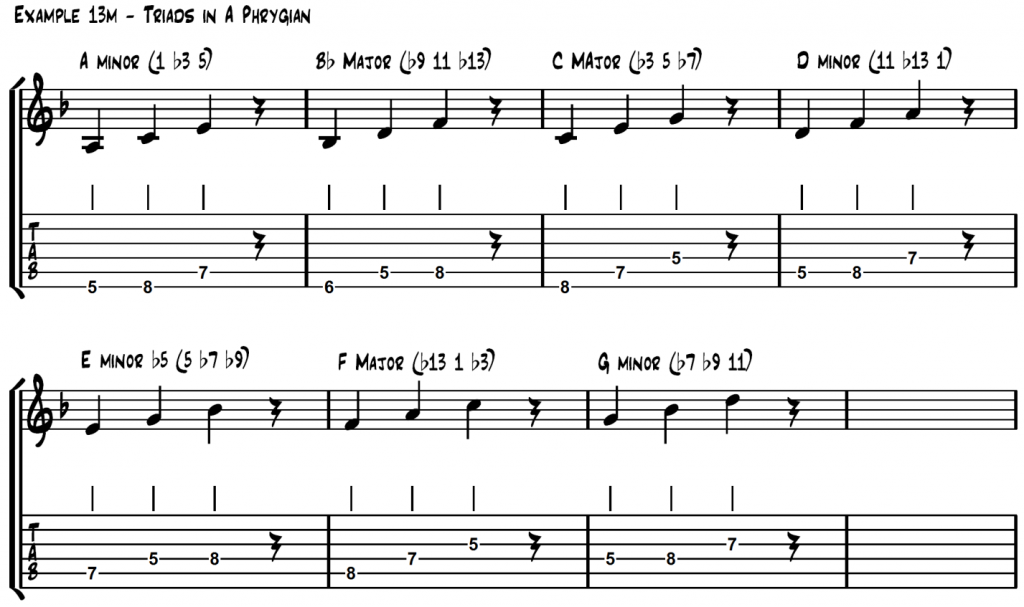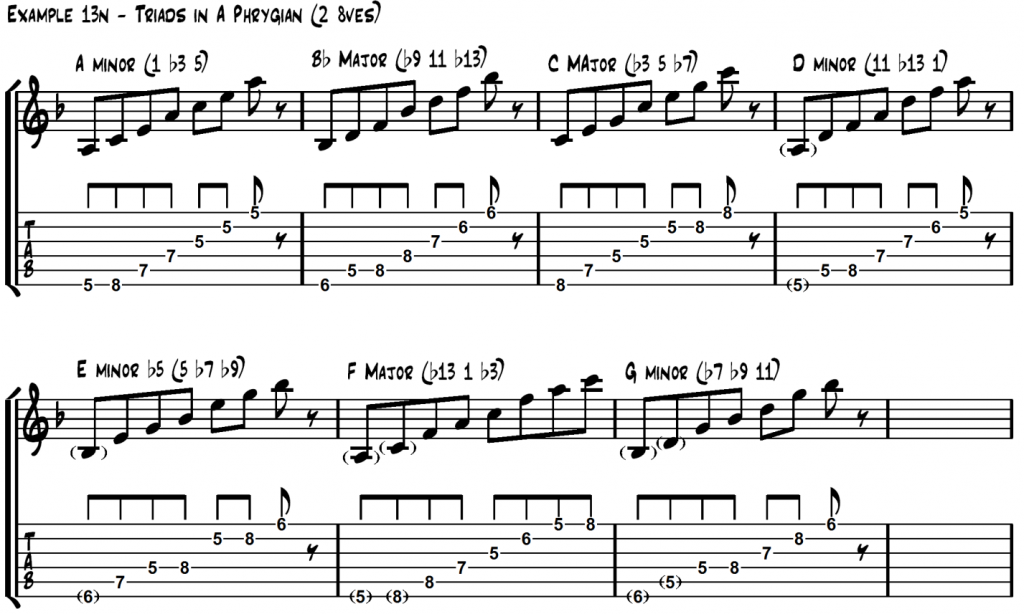The Phrygian Mode for Guitar – Part 2
Continuing from The Phrygian Mode Part One, We will continue our look at dissecting the Phrygian mode for guitar by beginning with a few Phrygian guitar licks
5 Useful Phrygian Licks
These licks are all included as audio examples here:





Soloing Approaches to the Phrygian Mode
The following sections analyse the approaches we use to dissect the A Phrygian Mode.
Each approach, (intervals, triads etc) represents one ‘level’ of depth we can investigate to create melodic ideas. Think of them as different layers of increasing complexity. All of the ideas can be freely combined in order to make a solo. Try each idea over our Phrygian backing track
to get a feel for the texture of each melodic concept.
2-Note Intervals with the Phrygian Mode





My first choice to play in Phrygian is usually 3rds and 6ths, but as always spend time practicing the ideas you most like the sound of.
3-Note Triads with the Phrygian Mode
By isolating triads built from each degree of the Phrygian mode, we can be specific about the intervals of the mode that we target when soloing. The triads from each scale degree are shown below and the intervals formed against the root note (A) are given.

 For reference, here is the list of triad chord types for Phrygian and the intervals they impose against the tonic:
For reference, here is the list of triad chord types for Phrygian and the intervals they impose against the tonic:
| Scale Degree | 3 Note Triads Built in Phrygian | Intervals Against Tonic |
| 1 | i minor | 1, b3, 5 |
| b2 | bII major | b9, 11, b13 |
| b3 | biii major | b3, 5, b7 |
| 4 | iv minor | 11, b13, 1 |
| 5 | v minor b5 | 5, b7, b9 |
| b6 | bVI major | b13, 1, b3 |
| b7 | bvii minor | b7, b9, 11 |
As a starting point for your studies, my favourite triads to solo with are:
Minor on the b7 (G minor over A Phrygian) (b7, b9 b3).
Major on the b2 (Bb major over A Phrygian) (b9, 11, b13).
Try making melodies using only one, or a combination of both of these triads.
These lessons on how to dissect modes for guitar are a sample of the much more comprehensive work, The Practical Guide to Modern Music Theory for Guitarists;
The full book is a complete and PRACTICAL music theory course for guitarists takes you on a journey starting from simple major scale construction, its 3 and 4 note harmonisations, and common chord sequences, to a massively deep and structured dissection of all the modes of the major scale.
“The artists you work with, and the quality of your work speaks for itself.”
Tommy Emmanuel
© Copyright Fundamental Changes Ltd 2024
No.6 The Pound, Ampney Crucis, England, GL7 5SA

